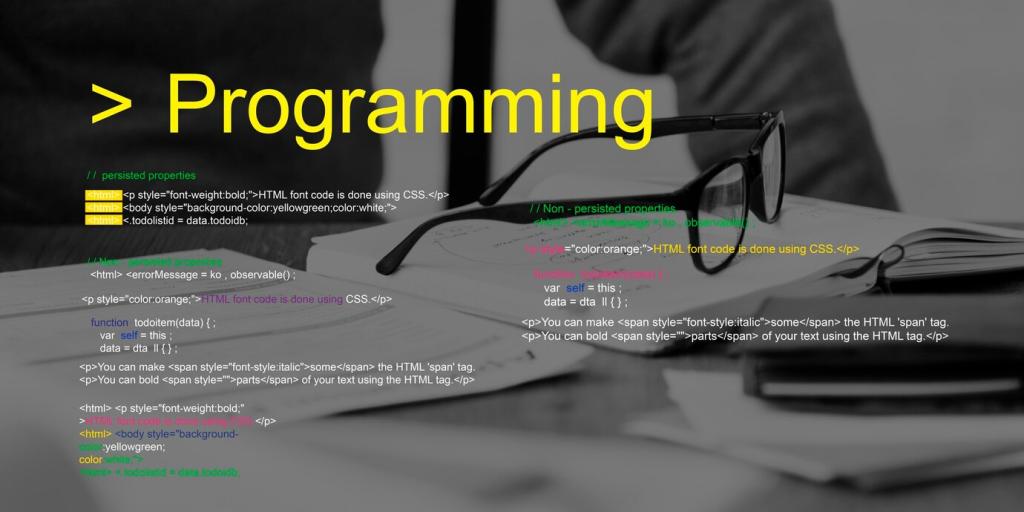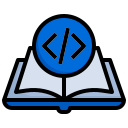Beginner's Guide to Programming Languages
Learning to program can be a transformative experience, opening doors to a wide range of opportunities in the tech world and beyond. Whether you’re aiming to develop websites, mobile apps, or complex software, understanding programming languages is the foundational step. This guide introduces you to the world of programming languages, offering insights and guidance for beginners eager to embark on this journey.

Previous slide
Next slide


Factors to Consider
When selecting a first programming language, consider factors like your goals, the language’s popularity, community support, and ease of learning. Popular languages like Python are beginner-friendly, have extensive communities, and provide resources for learning, making them excellent starting points for new programmers.
Popular Languages for Beginners
Some of the most popular programming languages for beginners include Python, JavaScript, and Ruby. Python is known for its readability and simplicity, while JavaScript is essential for web development. Ruby, with its elegant syntax, is also a favorite among beginners. Each language has a unique set of features that cater to different interests and industries.
Learning Resources and Communities
Starting with the right resources can significantly ease your learning journey. Online platforms, coding bootcamps, and community forums provide valuable insights and support. Engaging with communities such as Stack Overflow or GitHub gives beginners the chance to collaborate and learn from more experienced developers, speeding up the learning process.
Understanding Different Paradigms
Programming paradigms are styles or ways of programming that provide some structure or pattern in designing software. Familiar paradigms include procedural, object-oriented, and functional programming. Each paradigm offers different advantages and approaches to problem-solving, and understanding them enriches your programming skills.
Procedural Programming
Procedural programming is based on the concept of procedure call, also known as routines or functions. This paradigm focuses on writing sequences of instructions to be executed in order, making it a straightforward and logical approach for many simpler tasks. Languages like C and Pascal are prominently used in procedural programming.
Object-Oriented Programming
Object-oriented programming (OOP) revolves around creating objects that contain both data and methods. OOP languages like Java and C++ are widely used due to their capability to model real-world entities and interactions, promoting reusability and design efficiency. Learning OOP principles is key to mastering software design and architecture.
Functional Programming
01
Functional programming is defined by treating computation as the evaluation of mathematical functions, avoiding changing-state and mutable data. Languages like Haskell and Scala emphasize functions as the primary construct, which leads to code that’s often easier to understand, test, and maintain. As you progress, understanding functional principles can be a powerful tool.
02
The benefits of functional programming include cleaner code, easier debugging, and enhanced scalability, making it useful in scenarios requiring high reliability and performance. Functional programming discourages side effects and mutable data, encouraging developers to write pure functions that lead to more predictable and bug-free code bases.
03
Begin your journey into functional programming with languages like Haskell or Scala. These languages are uniquely designed to embrace the principles of functional programming. By experimenting with these languages, you’ll gain a deeper understanding of how functions can be used to create more efficient and effective programs.
Programming Tools and Environments
Integrated Development Environments, or IDEs, are applications that provide comprehensive facilities to computer programmers for software development. Tools like Visual Studio Code, PyCharm, and Eclipse offer features such as code completion, debugging, and syntax highlighting, which greatly enhance productivity and ease of learning for beginners.


Frontend vs. Backend
Web development is broadly categorized into frontend and backend development. Frontend involves creating the visible part of applications using languages like HTML, CSS, and JavaScript, while backend focuses on server-side logic using languages such as Python, Ruby, or PHP. Understanding the distinction is vital for building full-stack applications.

HTML, CSS, and JavaScript
HTML, CSS, and JavaScript form the trio for building the frontend of web applications. HTML structures the content, CSS styles it, and JavaScript adds interactivity. Learning these languages provides foundational knowledge for anyone interested in web development, enabling you to create dynamic and visually appealing web pages.

Server-Side Languages
Server-side programming is essential for building dynamic websites and applications. Languages like PHP, Node.js, and Python enable developers to handle requests, interact with databases, and perform complex computations. Understanding server-side languages is crucial for creating robust and scalable web applications capable of supporting various functionalities.
Developing mobile applications requires understanding platform-specific languages. Android apps are primarily built using Java or Kotlin, while iOS apps utilize Swift or Objective-C. Each platform has its own set of tools and environments, and mastering these languages opens doors to the rapidly growing mobile app industry.
Mobile Development Languages
Data Science and Scientific Computing
Programming is pivotal in data science, facilitating data analysis, visualization, and the building of machine learning models. Languages like Python and R, with their extensive libraries and tools, are favorites among data scientists. Understanding programming in this context is essential for extracting insights and making data-driven decisions.

